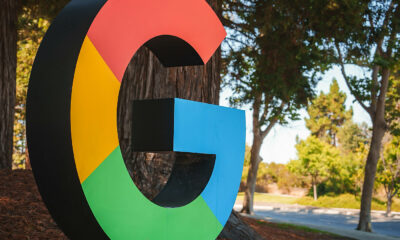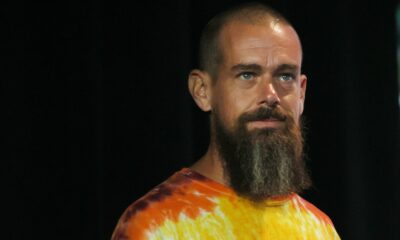SOCIAL
Twitter Defends Fake Account Metrics After Latest Queries from Elon Musk
So, how’s Elon Musk’s Twitter takeover going?
Well, not ideal.
Today, in response to public criticism from Musk that Twitter’s methodology in counting spam and fake accounts is clearly wrong, current Twitter CEO Parag Agrawal tweeted out a long explanation of the company’s current fake profile detection and removal process.
Over the last week, Musk has questioned whether Twitter’s estimation that 5% of all Twitter accounts are fake could possibly be correct, and has invited his 90m+ followers to conduct their own rudimentary experiments to see what they find.
To find out, my team will do a random sample of 100 followers of @twitter.
I invite others to repeat the same process and see what they discover …
— Elon Musk (@elonmusk) May 14, 2022
Of course, any anecdotal test like this is massively flawed, and will ultimately prove nothing.
But as with many aspects of the platform, Musk is seemingly learning about these processes in real time, in the midst of a $44 billion takeover, despite all of his various questions being raised and assessed, in various form, in the past.
So, with chatter around this specific element rising, Agrawal addressed Elon’s criticisms directly.
First off, Agrawal explained that detection of bot accounts is not easy, and likely can’t be done by regular users:
“The most advanced spam campaigns use combinations of coordinated humans + automation. They also compromise real accounts, and then use them to advance their campaign. […] The hard challenge is that many accounts which look fake superficially, are actually real people. And some of the spam accounts which are actually the most dangerous – and cause the most harm to our users – can look totally legitimate on the surface. Our team updates our systems and rules constantly to remove as much spam as possible, without inadvertently suspending real people or adding unnecessary friction for real people when they use Twitter: none of us want to solve a captcha every time we use Twitter.”
So randomly counting the accounts that you suspect are fake in your own following list won’t be accurate. Which, really, seems obvious.
Note, too, the reference to performing a CAPTCHA verification process every time you use the app is a direct reference to another suggestion by Musk.
“Each human review is based on Twitter rules that define spam and platform manipulation, and uses both public and private data (eg, IP address, phone number, geolocation, client/browser signatures, what the account does when it’s active…) to make a determination on each account. The use of private data is particularly important to avoid misclassifying users who are actually real. FirstnameBunchOfNumbers with no profile pic and odd tweets might seem like a bot or spam to you, but behind the scenes we often see multiple indicators that it’s a real person.”
In other words, there are many elements that go into detecting and determining fake profiles and spam, not just gut feel, or account info that makes a regular user narrow their eyes. Twitter has the back-end insight to support its investigations, and it’s more in-depth than a simple eye test.
“Every quarter, we have estimated that <5% of reported mDAU for the quarter are spam accounts. Our estimate is based on multiple human reviews (in replicate) of thousands of accounts, that are sampled at random, consistently over time, from accounts we count as mDAUs. We do this every quarter, and we have been doing this for many years.”
That’s interesting, because according to Musk, Twitter only samples 100 random accounts for this figure.
Twitter legal just called to complain that I violated their NDA by revealing the bot check sample size is 100!
This actually happened.
— Elon Musk (@elonmusk) May 14, 2022
As you can see, Musk then further claims that Twitter contacted him over violating the terms of his agreement on this element – so either Musk is making this up, or Agrawal is exaggerating Twitter’s process.
Again, there’s no smooth sailing in the Elon takeover push.
In summing up, Agrawal says that, actually, based on its most recent reporting, its fake account figure is less than 5%.
“Our actual internal estimates for the last four quarters were all well under 5% – based on the methodology outlined above. The error margins on our estimates give us confidence in our public statements each quarter. Unfortunately, we don’t believe that this specific estimation can be performed externally, given the critical need to use both public and private information (which we can’t share). Externally, it’s not even possible to know which accounts are counted as mDAUs on any given day. There are LOTS of details that are very important underneath this high-level description.”
Musk’s response?
Right. Seems like that’s going to go over well – and again, it’s fascinating to see the internal machinations of a multi-billion dollar deal come down to misinterpretations, and technical interpretations versus an individual’s personal view.
At best, the back and forth would have to trigger some level of concern over Musk’s capacity to transform Twitter into a money-making machine, as per his projections, given that he seems unable to grasp even some of the most basic social media metrics.
But then again, many will also say that Musk is right, that it’s not possible for Twitter’s fake profile count to be so low, based on their own, personal experience, but also, based on published external studies which would clearly suggest otherwise.
Indeed, back in 2017, a joint study conducted by researchers from the University of Southern California and Indiana University found that around 15% of Twitter’s user base were bots rather than people, while in 2018, Twitter suspended or removed more than 70 million accounts which it had determined were fake. At that time, Twitter had 330 million monthly active users, which would suggest that around 20% of its user count were not actual, real people.
In response to this latest exchange, SparkToro conducted a fresh analysis of 44,058 active Twitter accounts and determined that 19.42% ‘fit a conservative definition of fake or spam accounts’.
The key may lie, then, in this element identified in Agrawal’s explanation:
Our estimate is based on multiple human reviews (in replicate) of thousands of accounts, that are sampled at random, consistently over time, from *accounts we count as mDAUs*. We do this every quarter, and we have been doing this for many years.
— Parag Agrawal (@paraga) May 16, 2022
What, exactly, is an mDAU according to Twitter?
“We define monetizable daily active usage or users (mDAU) as Twitter users who logged in or were otherwise authenticated and accessed Twitter on any given day through Twitter.com or Twitter applications that are able to show ads.”
So there could be other users that fall outside of this count – maybe they’re not active every day so they miss the assessment, or they’re not eligible to be shown ads, due to varying system logic. There may be, due to varying parameters, some technical explanations that would address some level of variance between these third-party findings and Twitter’s own data.
But even then, Twitter’s 5% count, on balance, seems like a stretch, and a bending of the actual truth in respect to what people are experiencing in the app.
And as Musk says:
So how do advertisers know what they’re getting for their money? This is fundamental to the financial health of Twitter.
— Elon Musk (@elonmusk) May 16, 2022
Which, of course, is a fundamental question that’s been raised by every advertiser and every business in digital marketing circles since the inception of the medium, so it’s not like this is breaking new ground, or will come as startling new insight for those in the sector.
But it is, seemingly, fairly new news for Musk himself. Which, again, could raise questions about his massive growth plans for the app.
So what happens now? Can Musk back out of the Twitter deal if, somehow, he can prove Agrawal wrong, and show that Twitter’s fake profile account is actually much higher than it says?
Well, probably not.
Musk, for better or worse, waived a lot of due diligence measures in his Twitter takeover proposal in order to push the deal through faster, which means that, as it stands right now, he’s pretty much locked in, and it would take a significant legal argument for him to walk away from the deal.
It’s feasible, with at least some legal precedent, that if Musk could prove definitively that Twitter had deliberately mislead the SEC in its regular financial statements, via its misreporting of fake profiles, that he could possibly get out of these requirements, with the argument being that the platform is simply not worth what believed, based on its financials. But that seems like a stretch, especially given Agrawal’s explanation.
Maybe, then, Musk is simply pushing to reduce his offer price, in order to get a better deal.
It’s not 100% clear what outcome Musk is seeking, but as it stands, it still looks like Musk will have to go through with the Twitter deal, even if he and his followers think these stats are wrong.
Will we ever find out what Twitter’s actual fake profile count is? Based on Agrawal’s explanation, that also seems unlikely, though the technicalities here seem important, in specifying what’s counted, and what’s not, in Twitter’s user stats.
Either way, the public debate can only be a negative for Twitter, in either reducing advertiser trust in its metrics, or highlighting a long-running issue with its systems.
Is that a good thing for Musk, the future owner of the platform, to be pushing in public? It seems like a flawed approach, especially given the various other options he would have available, in terms of private audits, discussing with Twitter internally, verifying through independent researchers, etc.
Maybe this is just how Musk plans to do things, but it’s not exactly an inspiring origin story for the next stage of the app.
SOCIAL
Snapchat Explores New Messaging Retention Feature: A Game-Changer or Risky Move?

In a recent announcement, Snapchat revealed a groundbreaking update that challenges its traditional design ethos. The platform is experimenting with an option that allows users to defy the 24-hour auto-delete rule, a feature synonymous with Snapchat’s ephemeral messaging model.
The proposed change aims to introduce a “Never delete” option in messaging retention settings, aligning Snapchat more closely with conventional messaging apps. While this move may blur Snapchat’s distinctive selling point, Snap appears convinced of its necessity.
According to Snap, the decision stems from user feedback and a commitment to innovation based on user needs. The company aims to provide greater flexibility and control over conversations, catering to the preferences of its community.
Currently undergoing trials in select markets, the new feature empowers users to adjust retention settings on a conversation-by-conversation basis. Flexibility remains paramount, with participants able to modify settings within chats and receive in-chat notifications to ensure transparency.
Snapchat underscores that the default auto-delete feature will persist, reinforcing its design philosophy centered on ephemerality. However, with the app gaining traction as a primary messaging platform, the option offers users a means to preserve longer chat histories.
The update marks a pivotal moment for Snapchat, renowned for its disappearing message premise, especially popular among younger demographics. Retaining this focus has been pivotal to Snapchat’s identity, but the shift suggests a broader strategy aimed at diversifying its user base.
This strategy may appeal particularly to older demographics, potentially extending Snapchat’s relevance as users age. By emulating features of conventional messaging platforms, Snapchat seeks to enhance its appeal and broaden its reach.
Yet, the introduction of message retention poses questions about Snapchat’s uniqueness. While addressing user demands, the risk of diluting Snapchat’s distinctiveness looms large.
As Snapchat ventures into uncharted territory, the outcome of this experiment remains uncertain. Will message retention propel Snapchat to new heights, or will it compromise the platform’s uniqueness?
Only time will tell.
SOCIAL
Catering to specific audience boosts your business, says accountant turned coach

While it is tempting to try to appeal to a broad audience, the founder of alcohol-free coaching service Just the Tonic, Sandra Parker, believes the best thing you can do for your business is focus on your niche. Here’s how she did just that.
When running a business, reaching out to as many clients as possible can be tempting. But it also risks making your marketing “too generic,” warns Sandra Parker, the founder of Just The Tonic Coaching.
“From the very start of my business, I knew exactly who I could help and who I couldn’t,” Parker told My Biggest Lessons.
Parker struggled with alcohol dependence as a young professional. Today, her business targets high-achieving individuals who face challenges similar to those she had early in her career.
“I understand their frustrations, I understand their fears, and I understand their coping mechanisms and the stories they’re telling themselves,” Parker said. “Because of that, I’m able to market very effectively, to speak in a language that they understand, and am able to reach them.”Â
“I believe that it’s really important that you know exactly who your customer or your client is, and you target them, and you resist the temptation to make your marketing too generic to try and reach everyone,” she explained.
“If you speak specifically to your target clients, you will reach them, and I believe that’s the way that you’re going to be more successful.
Watch the video for more of Sandra Parker’s biggest lessons.
SOCIAL
Instagram Tests Live-Stream Games to Enhance Engagement

Instagram’s testing out some new options to help spice up your live-streams in the app, with some live broadcasters now able to select a game that they can play with viewers in-stream.
As you can see in these example screens, posted by Ahmed Ghanem, some creators now have the option to play either “This or That”, a question and answer prompt that you can share with your viewers, or “Trivia”, to generate more engagement within your IG live-streams.
That could be a simple way to spark more conversation and interaction, which could then lead into further engagement opportunities from your live audience.
Meta’s been exploring more ways to make live-streaming a bigger consideration for IG creators, with a view to live-streams potentially catching on with more users.
That includes the gradual expansion of its “Stars” live-stream donation program, giving more creators in more regions a means to accept donations from live-stream viewers, while back in December, Instagram also added some new options to make it easier to go live using third-party tools via desktop PCs.
Live streaming has been a major shift in China, where shopping live-streams, in particular, have led to massive opportunities for streaming platforms. They haven’t caught on in the same way in Western regions, but as TikTok and YouTube look to push live-stream adoption, there is still a chance that they will become a much bigger element in future.
Which is why IG is also trying to stay in touch, and add more ways for its creators to engage via streams. Live-stream games is another element within this, which could make this a better community-building, and potentially sales-driving option.
We’ve asked Instagram for more information on this test, and we’ll update this post if/when we hear back.
-

 PPC5 days ago
PPC5 days agoHow the TikTok Algorithm Works in 2024 (+9 Ways to Go Viral)
-

 SEO6 days ago
SEO6 days agoBlog Post Checklist: Check All Prior to Hitting “Publish”
-

 SEO4 days ago
SEO4 days agoHow to Use Keywords for SEO: The Complete Beginner’s Guide
-

 MARKETING5 days ago
MARKETING5 days agoHow To Protect Your People and Brand
-

 PPC6 days ago
PPC6 days agoHow to Craft Compelling Google Ads for eCommerce
-

 SEARCHENGINES6 days ago
SEARCHENGINES6 days agoGoogle Started Enforcing The Site Reputation Abuse Policy
-

 MARKETING4 days ago
MARKETING4 days agoThe Ultimate Guide to Email Marketing
-

 MARKETING6 days ago
MARKETING6 days agoElevating Women in SEO for a More Inclusive Industry
















You must be logged in to post a comment Login